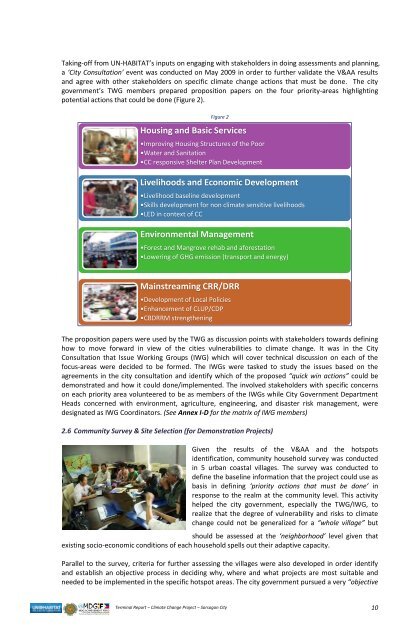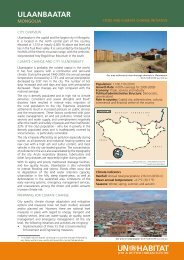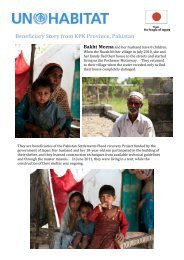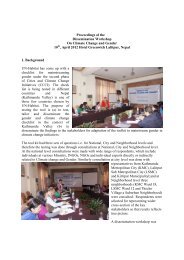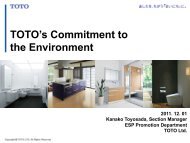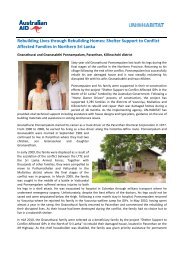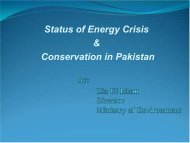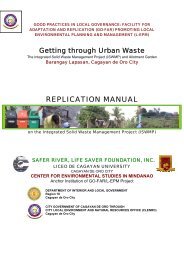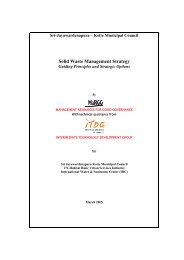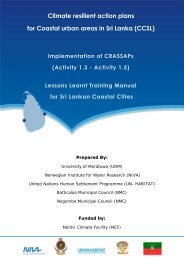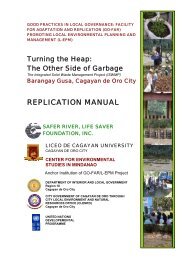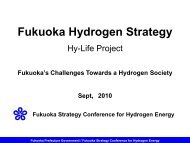Sorsogon City Terminal Climate Change Project Report
Sorsogon City Terminal Climate Change Project Report
Sorsogon City Terminal Climate Change Project Report
- No tags were found...
You also want an ePaper? Increase the reach of your titles
YUMPU automatically turns print PDFs into web optimized ePapers that Google loves.
Taking-off from UN-HABITAT’s inputs on engaging with stakeholders in doing assessments and planning,a ‘<strong>City</strong> Consultation’ event was conducted on May 2009 in order to further validate the V&AA resultsand agree with other stakeholders on specific climate change actions that must be done. The citygovernment’s TWG members prepared proposition papers on the four priority-areas highlightingpotential actions that could be done (Figure 2).Figure 2Housing and Basic Services•Improving Housing Structures of the Poor•Water and Sanitation•CC responsive Shelter Plan DevelopmentLivelihoods and Economic Development•Livelihood baseline development•Skills development for non climate sensitive livelihoods•LED in context of CCEnvironmental Management•Forest and Mangrove rehab and aforestation•Lowering of GHG emission (transport and energy)Mainstreaming CRR/DRR•Development of Local Policies•Enhancement of CLUP/CDP•CBDRRM strengtheningThe proposition papers were used by the TWG as discussion points with stakeholders towards defininghow to move forward in view of the cities vulnerabilities to climate change. It was in the <strong>City</strong>Consultation that Issue Working Groups (IWG) which will cover technical discussion on each of thefocus-areas were decided to be formed. The IWGs were tasked to study the issues based on theagreements in the city consultation and identify which of the proposed “quick win actions” could bedemonstrated and how it could done/implemented. The involved stakeholders with specific concernson each priority area volunteered to be as members of the IWGs while <strong>City</strong> Government DepartmentHeads concerned with environment, agriculture, engineering, and disaster risk management, weredesignated as IWG Coordinators. (See Annex I-D for the matrix of IWG members)2.6 Community Survey & Site Selection (for Demonstration <strong>Project</strong>s)Given the results of the V&AA and the hotspotsidentification, community household survey was conductedin 5 urban coastal villages. The survey was conducted todefine the baseline information that the project could use asbasis in defining ‘priority actions that must be done’ inresponse to the realm at the community level. This activityhelped the city government, especially the TWG/IWG, torealize that the degree of vulnerability and risks to climatechange could not be generalized for a “whole village” butshould be assessed at the ‘neighborhood’ level given thatexisting socio-economic conditions of each household spells out their adaptive capacity.Parallel to the survey, criteria for further assessing the villages were also developed in order identifyand establish an objective process in deciding why, where and what projects are most suitable andneeded to be implemented in the specific hotspot areas. The city government pursued a very “objective<strong>Terminal</strong> <strong>Report</strong> – <strong>Climate</strong> <strong>Change</strong> <strong>Project</strong> – <strong>Sorsogon</strong> <strong>City</strong>10


